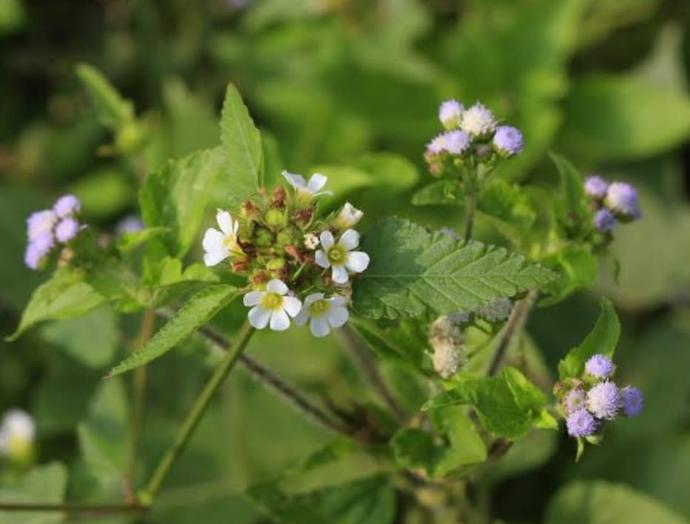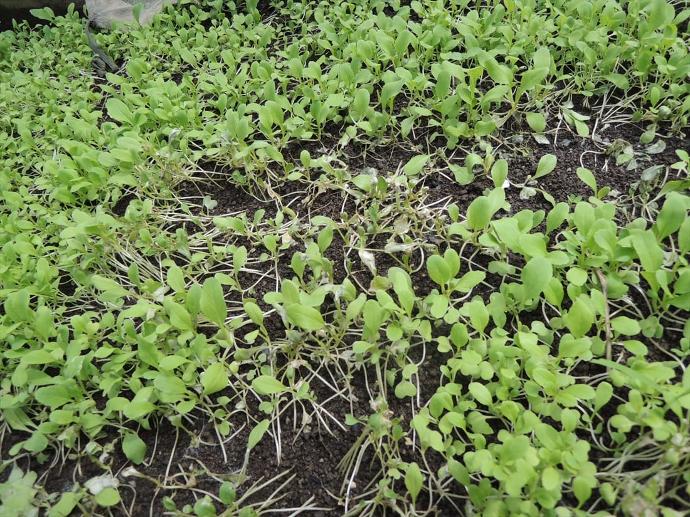Chinabox Plant
Chinabox, a specific plant, may have varying care requirements. Generally, provide well-draining soil, appropriate sunlight, and regular watering. Pruning and fertilizing practices may vary based on the specific characteristics of this plant.

Habit
Shrub
Height
3-8 m
Growth
Fast
Soil
Well-drained, organic soil
Shade
Full Sun
Moisture
Moist
Edible
No
Medicinal
No
Origin
Southeast Asia
Climatic Condition
Tropical, Humid
Temperature (°)
20-35°C
Humidity (%)
70-90%
Potting media
Peat, mulch
Fertilizers
Organic fertilizers
Watering
Regular watering
Plant Weight
500-1000 g
Flowering Time
Summer, Monsoon
Soil Ph level
6.0 - 7.5
Water Ph level
6.0 - 7.5
Soil EC
1-2 dS/m
Yield Per Plant
Ornamental
NPK ratio
10:10:10
life Span
Perennial (10+ years)
Health Benefits
Traditional medicine, antimicrobial properties
Suggested Grow Media or Potting Mix ?
50% compost, 30% perlite, 20% peat moss
Suggested Fertigation/Fertilizers
Fertilize every 2 weeks with a balanced, water-soluble fertilizer.
Common Diseases and Remedies
Witches broom , damping off , die back
Leaf chlorosis, leaf let and internode shortening.
pruning off old leaves.
HEALTH BENEFITS
- Used in Ayurveda for anti-inflammatory and digestive benefits.
- Supports liver health and detoxification.
- May help in reducing fever and respiratory infections.
- Rich in antioxidants, promoting general well-being.
What Is An china box Tree?
Melokia corcolifolia, commonly known as "chocolate weed" or "red tower hemp," is a flowering plant in the Malvaceae family. It is native to tropical and subtropical regions of America, Africa, and Asia. This plant is often considered a weed and can be found in waste areas, roadsides, and landfills. Melochia corchorifolia usually grows as a shrub, reaching approximately 1-2 meters in height. It has five-petaled pink to reddish-purple flowers, and the leaves are usually serrated and heart-shaped. The common name "chocolate weed" may have come from the dark or chocolate-like appearance of the plant's stems.
What Are The Different Types Of China box Plants?
Melochia corchorifolia usually grows as a shrub, reaching approximately 1-2 meters in height. It has five-petaled pink to reddish-purple flowers, and the leaves are usually serrated and heart-shaped. The common name "chocolate weed" may have come from the dark or chocolate-like appearance of the plant's stems. Plants themselves can exhibit some variation in characteristics such as leaf shape, flower color, and growth habit, but specific classification into types and varieties is not as widely studied or as other crop plants. It may not be defined. They are often mutated and found in the wild or as weedy species, rather than as cultivated ornamental or useful plants.
How to care for China box Plants ?
1. Location
Although this is an outdoor plant, it is important to consider the specific climate and growing conditions of your area. Melochia corchorifolia is native to tropical and subtropical regions and prefers warm temperatures. Areas with frost or cold winters may not be suitable for growing outdoors year-round.
2. Sunlight
Melochia corchorifolia prefers full sun but can tolerate partial shade.
3. Soil
It is not very selective about soil type and can grow in a variety of soil conditions. Generally, well-drained soil is suitable.
4. Hydration
Once established, chocolate weed has some desiccation tolerance. Water regularly during dry periods, but be careful not to overwater as the plant is drought tolerant.
5. Nutrition
Nitrogen (N), phosphorus (P), and potassium (K) are suitable. For example, you can use a fertilizer with an NPK ratio of 10-10-10 or 14-14-14.
In nutrient-poor soils, a balanced fertilizer can be applied during the growing season to promote healthy growth. However, this plant is often found in fertile areas, so additional fertilization is not often required.
6.Issues
Chocolate weed (Melochia corchorifolia) can pose certain challenges and problems, especially in areas where it is considered invasive. Notable concerns include the potential for native vegetation to shift, leading to ecological imbalance. As a fast-growing and adaptable species, it can spread quickly, be difficult to control, and potentially disrupt natural ecosystems. Additionally, due to its aggressive growth habit, chocolate weed can be considered a nuisance in growing areas and requires consistent management and control efforts. Although this plant has a long history of use in traditional medicine, it contains potentially toxic compounds, highlighting the need for caution and proper knowledge when considering medical uses.
What are the Benefits of China box Plants ?
Ecological role: Chocolate weed contributes to ecological diversity by providing habitat and food sources for a variety of insects and birds in the natural environment. Traditional Medicine: In some cultures, parts of Melochia corcolifolia have been used in traditional medicine for various purposes. However, it is important to note that this plant contains potentially toxic compounds and its use as a medicine should be done with caution and under the guidance of a knowledgeable physician. Soil Erosion Control: Vigorous and adaptable plants that help stabilize soils and prevent erosion in disturbed areas.
FAQs About Growing China box
1. How does chocolate weed contribute to the ecosystem?
In its natural environment, chocolate weed contributes to ecological diversity by providing habitat and food sources for a variety of insects and birds. It also helps stabilize soil and prevent erosion.
2. Can chocolate weed be grown indoors?
Chocolate weed is primarily an outdoor plant and is usually grown in gardens or natural environments. Although it can survive temporarily indoors in potted plants, it prefers an outdoor environment with plenty of sunlight.
3. What are the potential benefits of chocolate weed?
Chocolate weed has ecological benefits, may contribute to soil stabilization, and has been used historically in traditional medicine. There is a gender. However, it is important to consider the potential invasiveness and toxicity.
4. How should I care for chocolate weed in the garden?
Provide plenty of sunlight, well-drained soil, and moderate watering. Prune regularly to control size and shape. Fertilize sparingly and be aware of possible infestation.
5. Is chocolate weed invasive? How can it be controlled
Yes, chocolate weed can be invasive in some areas. Management methods include regular pruning, manual removal, and monitoring to prevent spread into natural ecosystems.

